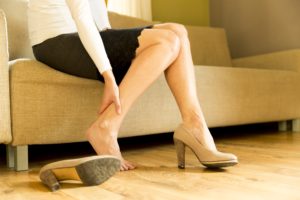 There can be many difficulties that come with aging, but none may sting as much as varicose veins. And not just from a literal standpoint. Although they can come along with some uncomfortable symptoms, it’s the appearance that people fear.
There can be many difficulties that come with aging, but none may sting as much as varicose veins. And not just from a literal standpoint. Although they can come along with some uncomfortable symptoms, it’s the appearance that people fear.
At some point, about 20 percent of us will get them. There are certain risk factors like a sedentary life, weight, and circulation that play a role, each making it difficult for veins to function effectively.
Advertisement
If you’ve got varicose veins, it’s not that you’re doing anything wrong; it’s just that your veins are getting weak and having a hard time functioning properly. Small valves inside the veins become weak and prevent blood from flowing backward. It starts to pool, and your veins can begin to turn color, become swollen, and, in some cases, create pain and irritation.
But really, all you might have to do is strengthen these valves like you’d strengthen any other body part: do some exercise. When you’re getting regular exercise, your blood is flowing, and the venous system starts functioning better. In other words, you can build healthy veins through movement.
The benefits of exercise for varicose veins are twofold. They help push out the backed-up blood so the valves can operate adequately. Exercise can lead to lower blood pressure. High blood pressure is another risk factor for varicose veins.
After reading this, you may jump off your sofa, grab your sweatsuit, and go out for a run. But please, don’t! Because of the pain and potential inefficiencies in your calves or legs caused by the varicose veins, taking a slow and measured approach is required. This means performing low-impact exercise that gets your calf muscles—and the necessary blood vessels—working without too much strain. Some good options to restore proper circulation in the area include walking, swimming, cycling, or yoga.
Once you’ve started incorporating exercise into your daily routine, keep at it: do your best to stop the varicose veins from reappearing!
